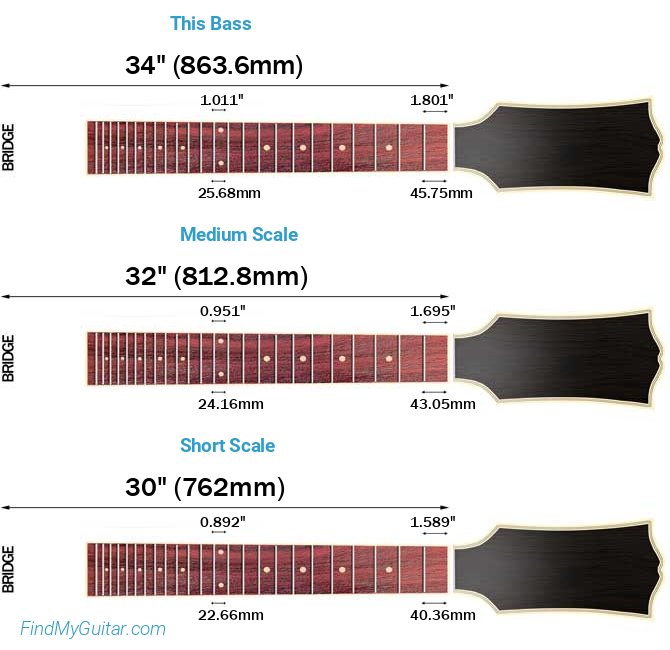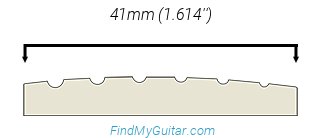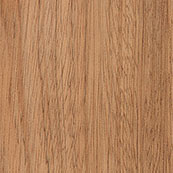Ibanez GSR200B Overview and Best Prices
- 1 Prices - New from $229.99 >
- From Ibanez's 2020 SR Gio series
- Made in Indonesia
- 4 strings
- 34"'' scale
- 12" Fretboard Radius
- Nyatoh body
- Maple neck
- Jatoba fretboard
- Bridge pickup: Dynamix J (Single Coil/Passive)
- Neck pickup: Dynamix P (Single Coil/Passive)
- 2 volume and 1 tone Dome knobs
- B10 bridge
- Bass GSR4 Bolt-On neck
- 22 Medium frets
- Ibanez tuners
- See all specs and compare >
Our Scores and Tone Evaluation
- Heavy Metal
- Hard Rock
- Jazz
- Blues
- Funk
- Country
Ibanez GSR200B
- Top Brand Pickups
- Active Preamp
- Cheap Fret Wire (NS)
- No Locking Tuners
- Made in Indonesia
- No Expensive Woods
- No High-Quality Nut
- No Neck-Through Build
- No Push Knob or Extra Switch Option
- No Weight Relief
- No Luminescent Inlay
- No Compound Radius Fretboard
- No 21:1 Tuner Ratio
- No Retainer Bar
- No Strap Lock
Price Overview
Its average competitor's price is $440, which means that the Ibanez GSR200B is around 48% cheaper than the competition. This takes into account all instruments of the same category in our database with 4 strings and Fixed bridge that are made in Indonesia.
These are affiliate links. We may earn a fee if you purchase after clicking. These prices are prone to error. Make sure you're buying the right product after clicking on a link from our site. We are not liable if you buy the wrong product after following these links. As an Amazon Associate site we earn from qualifying purchases.
User Feedback
Not all instruments are created equally. That's why it's important to have different opinions. Here's what our users who have played this instrument say. If you've played it before, help others by voting below!
Weight
VoteTuning stability
VoteNeck speed (thickness)
VoteNeck access to high frets
VoteNeck profile shape
VoteFret edges
VotePickups noise
VotePickups power
VoteUser Reviews
Videos









Often Compared With
Playability
The Ibanez GSR200B meets 3 out of our 6 criteria items for beginner friendliness, which means that it's not bad for beginners, but it could be better. This takes into account the type of frets, scale length, nut width, bridge type, fretboard radius, and neck profile to determine the easiest combination for new players to get used to.
New Player Friendliness
Ibanez GSR200B- Comfortable shape
- Tall frets
- Comfortable neck
- Comfortable fretboard
- Narrow nut
- Short scale
Hand Size Comfortability
After taking into account the neck profile, scale size, fretboard radius, and nut width, we can conclude that the Ibanez GSR200B's construction favors people with relatively big hands.
Nevertheless, this comes down in the end to personal preference. Make sure you test this bass—or another one with similar characteristics—before buying.
Scale Length
Scale length is the distance the strings will span between the bridge and the nut. It can tell you a lot about the overall playability and tone of the instrument. A longer scale length means longer distance between frets, brighter tone and more string tension—which means lower action, but more difficult bending of the strings.
Here's the Ibanez GSR200B's 34" scale length compared to other common sizes:

This is considered a long scale bass, and it's the most popular choice for several reasons. Even though it might be more difficult to play than short scale basses due to their increased string tension, their punchier low-end results in a clear and defined bass tone that can cut through in a mix, making them well-suited for genres like rock, metal, and funk.
Neck Profile

The neck profile tells you the thickness (neck depth) and shape in cross section. Every difference will completely change the feeling and comfortability of the neck. This is a highly subjective thing, but most players indeed prefer certain types of necks (like Cs and Ds) because they feel nice in most hands.
The Ibanez GSR200B's neck thickness is approximately 0.827'' (21mm) at the first fret, and 0.866'' (22mm) at the twelfth.
These measurements were taken either from the official Ibanez website, or, in case this information wasn't provided, by researching multiple online marketplaces and forums where owners of this model have posted their measurements.
It has a C type neck. C-shaped necks like this have been the most popular for the last years. The reason is that they feel good in most hands. It's generally a thin neck that doesn't get in your way when playing fast, but that also has enough mass to give your hands a comfortable grip for chords if they aren't too big.
Thin necks like this make it easier to move your hand across the neck and it helps when playing fast solos, especially if you like to leave your thumb free while playing high on the fretboard. However, thinner necks are also weaker and will need adjustment more often than a thicker neck.
Fretboard Radius
When it comes to fingerboard radius, personal preference will dictate which one is better for you. However, most people seem to agree that a more curved (lower) radius will make it easier to play chords while a less curved (higher) radius is better for soloing and bending.
The Ibanez GSR200B has a 12" fingerboard radius.
Here's an image comparing this fretboard radius to other popular choices:

This is the same radius that Gibson uses in most of their guitars. When compare to the other popular radius of Fender Stratocasters, you can see that it's a lot flatter. Guitars with this radius are usually made to bring a good balance between single-note and chord playing.
Compound radius fingerboards give the best of both worlds. Unfortunately, the Ibanez GSR200B has the same radius across the board.
Playability compared to main competitors
Nut Width

The Ibanez GSR200B has a nut width of 41mm (1.614''). This is considered a wide width for a 4-string bass. A wider nut provides more space between the strings, making it easier for players to execute techniques like slap bass and tapping, which require extra room for precision. However, players with smaller hands might find it challenging to comfortably reach across the wider fretboard, as it requires a wider stretch between the fingers.
Frets
The Ibanez GSR200B has 22 frets. Even though 24 frets has become really popular, there's still a good reason to get fewer frets; the pickup at the neck position will be further away from the bridge. This makes the neck pickup achieve a warmer tone. You might want this if you're playing Jazz or similar genres.
However, if you don't care about the warmer neck pickup, more frets will always be better. It's always nice to have the option to play higher notes if you want to.
It comes with nickel silver frets, so they won't last as long as stainless steel frets. If you use your instrument a lot, you might need to replace the frets after a few years. But this is unlikely as most people change instruments before this happens.
Fret Size

Finally, let's talk about fret size. Some people prefer tall frets because it's easier to press the strings and perform bends since there's less friction against the fretboard. On the other hand, some people like shorter frets because they like to touch the fretboard when playing, or because they got heavy hands and tend to press too much on the string and alter the of the note pitch accidently.
The Ibanez GSR200B's frets are Medium size. With medium frets, you can feel the fretboard more than with jumbo frets, but it's still easier to press the strings cleanly than with small frets; notes might change their pitch just slightly if you press hard on the fret. Also, if you need to do some fret leveling after years of playing, you'll have some room to sand them down without having to replace them.
Playability Score
Tone
Wood will have little influence in the final tone of an electric guitar or bass. Instead, the hardware, especially the pickups, will be the most important thing to look at. Bur first, let's see the quality of the wood.
Wood



Nyatoh Body: It's a wood type found mainly in Indonesia. It's fairly hard and durable and is becoming popular for building guitars because it isn't expensive.
Maple Neck: This is one of the most popular types of wood used in all kinds of guitars. It's heavy, strong and compact, which makes it great for necks. However, it's also used for fretboards, bodies and tops due to its light color, resistance and beautiful patterns. When it comes to tone, it highlights the mid and high frequencies.
Jatoba Fretboard: It's an exceptionally hard and dense wood that emphasizes the mid-lows, giving a fuller, more round sound than, for example, Mahogany. However, it also has a lot of clarity in the top end.
Pickups
This bass comes with pickups from one of the top brands: Dynamix. So you can expect well built pickups with great sound that shouldn't need an upgrade anytime soon.
These are passive pickups, so you can expect a rounder sound and a moderade level of output.
Preamp
The preamp is an electronic circuit that serves as an intermediary between the bass's pickups and the amplifier. Its primary function is to boost and shape the bass's raw signal before it reaches the amplifier. This allows for greater control over the bass's tone, volume, and other sound characteristics. Preamps often include tone controls, equalization settings, and sometimes even onboard effects, enabling bassists to tailor their sound to their preferences and the musical context.
This bass has a Active preamp. Unlike passive basses, which rely solely on passive pickups and tone controls, active preamps require a power source, typically a 9-volt battery, to operate. The active preamp offers several advantages, including the ability to boost or cut specific frequencies, resulting in a more versatile and customizable tonal palette. Active basses are favored in genres where precise tonal sculpting and extended tonal options are essential, such as jazz fusion or progressive rock. However, they do require occasional battery replacement or recharging to ensure optimal performance.
The Ibanez GSR200B's configuration is PJ. It offers a versatile tonal range by combining the warm, punchy sound of a Precision-style (P-style) pickup with the brighter, more articulate tones of a Jazz-style (J-style) pickup. This makes it a great choice for those seeking tonal flexibility.
More with the same pickups
Versatility
Unfortunately, it doesn't come with more options for coil split or coil tapping. This makes it less versatile than some competitors.
Diagram
Unfortunately, we didn't find information about the switching diagram for this guitar.
What music genre is it good for?
As a 4 strings, Solid Body bass with PJ configuration and Passive pickups, we'd recommend it for genres like Funk or similar. However, you can use almost any bass for any genre. This is just the typical type of music for this particular one.
Sound Score
Build Quality
Country of Origin
Knowing where the instrument is produced is a good way to know how well it's built. Some manufacturing countries are known for having higher quality standards. For example, most expensive instruments are made in the US or Japan, but there are some exceptionally great countries—like South Korea—that are building a good reputation.
The Ibanez GSR200B is made in Indonesia. Many people prefer the quality of an Indonesian guitar over a Chinese. Respectable brands like Epiphone, Ibanez and Schecter are building in this country because of the great quality and lower price. Some people like to compare them to the ones built in Japan during the 80s, when Japanese guitar makers made a name for themselves.
Still, remember that we're taking about Ibanez here, which is a brand with good renown. They know how to use cheap labor in this country without sacrificing too much quality. So you shouldn't end up receiving a useless or ugly instrument.
Bridge
B10: The advantage of fixed bridges is that they don't require any kind of set-up. This makes it extremely easy when changing strings because you don't need to adjust anything besides tuning the guitar. Also, the fact that the bridge is directly attached to the body will help to increase sustain. The disadvantage is the lack of versatility since you can't create the same vibrato effects as with tremolo bridges.
Nut Material
Another important thing to analyze is the nut material, as it's one of the most important aspects that can affect the sound and playability of your bass. A well-cut nut will make sure it stays in tune and will make it more comfortable to play.
In this case, the Ibanez GSR200B has a Plastic nut. This is a low-quality nut that you might want to consider upgrading soon. Bone and TUSQ nuts are the best for guitars with a fixed or simple tremolo bridge.
Neck Joint
The neck joint is the part where the neck of the bass meets the body. There are three main techniques to attach both parts together: Set-In, Bolt-On and Neck-Through. The latter two provide different advantages, although neck-throughs are the most expensive.
This bass has a Bolt-On neck joint. Even though this type of neck was looked down upon for a long time, nowadays bolt-on necks are well built and provide just as much sustain as any other join method. First of all, it's cheap to make because it consists of simply 4 bolts that attach the neck to the body. And you can travel with the guitar more easily, swap out the neck if you damage it, or upgrade to a more comfortable neck later on.













